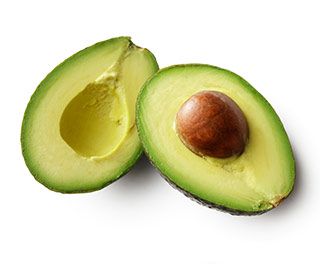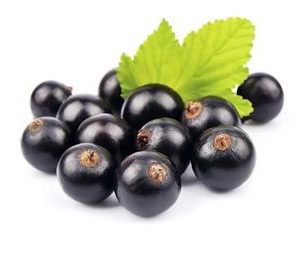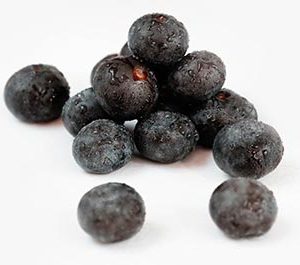Avocados rose to popularity because of their flavor and versatility. Gonzalo Fernandez de Oviedo, a historian for a group of Spanish conquistadors, first talked about an avocado tree that bore fruits the same shape as pears, but had a rind that was “similar to butter and of very good eating and of good taste.” His account was published in the “Sumario de la Natural Historia de las Indias” in 1526, but avocados were already being used for years in Mexico, Central America and the West Indies.
This fruit’s name in the Aztec language might be surprising unless you know how it grows on the branch. It was called the “ahuacatl,” which directly translates to “testicle.” This is in reference to how avocados grow in pairs, which the Aztecs probably found to have resembled its namesake.
Avocado-related references were also found on Pacal tombs in Chiapas (also in Mexico), and in Aztec paintings. The Mayan calendar also considered avocado as the name of its 14th month. Its introduction to America came around 1850. The first person to grow an avocado tree in California was said to be Dr. Thomas White from San Gabriel, which was reported in the California State Agricultural Society Report. However, the first tree did not produce any fruit.
Today, California is responsible for producing nearly 90% of avocados in the U.S., and the California Avocado Commission highlights that the state has 3,000 growers who cultivate the fruit across 50,000 acres.
How to Prepare Avocados
To enjoy fresh avocados, you need to prepare them well. As much as possible, peel the avocados using your hands so the antioxidants in the fruits can be preserved. Here’s a step-by-step guide from the California Avocado Commission on how to properly peel an avocado:
- Wash the avocados before eating to help lower your risk for bacteria contamination.
- Cut the avocado in half lengthwise, around the seed.
- Cut each half further to make four avocado segments by rotating the fruit (about a 1/4 turn) and slicing it lengthwise around the seed.
- Separate the four segments from each other and remove the seed.
- Use your hands to peel the skin off each avocado quarter.
Health Benefits of Avocado
It’s not surprising that avocados are considered one of the best fruits for your health. When it comes to nutrition, avocados are in a class by themselves because of the unusually large number of nutrients you can get from them.
Avocados contain high amounts of potassium, choline and fatty acids, which are essential nutrients that play a role in cardiovascular health, neurotransmission and cell metabolism. It may also help to:
- Improve insulin sensitivity through its vitamin K
- Protect the immune system and fight off free radical damage due to its considerable vitamin C levels
- Regulate protein synthesis, muscle contraction and blood glucose levels because of its magnesium content
- Protect you from osteoporosis or the loss of bone density
Studies Done on Avocados
Avocados are home to fatty acids called lipids, alongside their derivatives and other related substances. Scientists discovered they’re not just simple building blocks, but perform complex, cell-regulating tasks on a molecular level. Multiple studies were conducted to see if avocados’ lipid content can deliver impactful benefits, and results were positive:
- Authors of a 2005 study in The Journal of Nutrition found that adding avocados to salad and salsa enhances your body’s ability to take up the benefits of carotenoids, primarily because of the fruits’ lipid content.
- A 2005 article published in The Journal of Nutritional Biochemistry focused on avocados’ yellow-green color, since its presence in other plant-based foods indicates carotenoid and other bioactive actions, as well as possible cancer-fighting properties. Results highlighted that monounsaturated fats in avocados may help your body absorb important bioactive carotenoids in combination with other fruits and vegetables, therefore helping reduce your cancer risk.
- According to a 2011 article published in the Archives of Dermatological Research, lipids extracted from avocados may have protective abilities against the harmful effects of ultraviolet radiation, such as sun damage and inflammation.
Avocado Nutrition Facts
There are numerous varieties of avocados that differ in shape and size, but there’s no denying that they can provide you with impressive amounts of vitamins and minerals that are essential for numerous body processes. Check out the table below for more info:
| Avocado Nutrition Facts
Serving Size: 1 cup, 150 grams, cubes |
||
| Amt. Per Serving |
||
| Calories | 240 | |
| Total Fat | 22 g | |
| Saturated Fat | 3.19 g | |
| Trans Fat | 0 g | |
| Cholesterol | 0 mg | |
| Sodium | 10.5 mg | |
| Total Carbohydrates | 12.8 g | |
| Dietary Fiber | 10 g | |
| Sugar | 0.99 g | |
| Protein | 3 g | |
| Vitamin A10.5 µg | Vitamin C | 15 mg |
| Calcium18 mg | Iron | 0.825 mg |
Avocado Fun Facts
The importance of avocado in indigenous culture, especially in the Aztecs, transcends its role in the culinary world. Spanish invaders observed that avocados were given by people to their rulers or as a currency for commercial trade.
Summary
Avocados aren’t just good for guacamole; They lend a creamy texture and delicious flavor to soups, salads and dips. They are very high in essential vitamins and minerals, including fiber, vitamins K, B5, B6 and C, folate and potassium, all of which may help boost your well-being.







Reviews
There are no reviews yet.